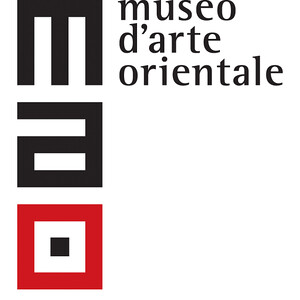Liquid Frontiers and Entangled Worlds: 2,000 Years of Visual and Material Culture From the Mediterranean to East Asia
April 12–September 1, 2024
via San Domenico, 11
10122 Torino
Italy
Hours: Tuesday–Sunday 10am–6pm
Featured artists: Yto Barrada, Ali Cherri, Anila Quayyum Agha, Shadi Harouni, Zeitguised.
On April 12, MAO is unveiling the refurbishment of Tradu/izioni d’Eurasia, an exhibition that tells the fascinating story of the journey of art, culture, traditions and language from East Asia to the Mediterranean basin (and back) through a new, well-chosen selection of pottery, textiles, metalwork and manuscripts.
Like Marco Polo, people travelled along the caravan routes that connected Asia and Europe across thousands of years. Travelling alongside with them were ideas, motifs and knowledge, an entire migrating heritage—material and immaterial—that put down roots everywhere it arrived through a steadfast process of adaptation. Tradu/izioni d’Eurasia tells this story, a tale made up of connections, influences and betrayals: it is our story, a narrative that unites far-flung corners of the Eurasian continent more than we are inclined to believe and shows that the concept of ‘border’ has always been illusory and arbitrary.
The new display the exhibition boasts numerous loans from the Museo delle Civiltà, Rome, the Museo Internazionale delle Ceramiche, Faenza and the Museo Nazionale della Ceramica Duca di Martina, Naples, and two masterpieces by Giovanna Garzoni, from the Gallerie degli Uffizi, Florence. The paintings from the Uffizi, both of which are vibrant still lifes, feature a Chinese vase and cup decorated with typical white and blue motifs, attesting to the fluidity with which objects and iconographic themes have always circulated across Eurasian, whether brought as gifts or sold along the trade routes. Through painting, Garzoni depicted the ties between Asia and Europe and the powerful fascination with the exotic that began bewitching the European courts, especially that of the Medici in Florence, in the fifteenth century. Art talking about art, in a play of references and decorative motifs that echo—familiar, yet different—at distant latitudes and in remote periods.
The heart of the reload is a series of site-specific works by the French-Moroccan artist Yto Barrada, the exhibition’s guest of honour. Drawing inspiration from Color Problems: A Practical Manual for the Lay Student of Color by Emily Noyes Vanderpoel (1842–1939), for Tradu/izioni d’Eurasia Reloaded Barrada made a series of eight medium-sized canvases that take an at once both archival and poetic approach to exploring the subject of colour and its meanings in works in the MAO collection. The series is of course an homage to Noyes Vanderpoel, a scholar, activist, artist and patron of the arts who was based in New York in the early twentieth century, but it is especially a narration of subterranean and subordinate stories linked to the theme of diaspora and cultural influence.
A story that dispenses with words in favour of the silken materiality of velvet.
Yto Barrada’s project was realised in collaboration with the Fondazione Merz, where the artist will hold a solo exhibition in the autumn of 2024. She is the winner of the fourth Mario Merz Prize, a biennial award instituted in 2013 with the aim of identifying and supporting individuals in the fields of international contemporary art and music. Yto Barrada’s works have been placed in dialogue with textiles and pottery on loan from the Fondazione Bruschettini per l’Arte Islamica e Asiatica. The new selection of works includes refined exemplars of Ottoman art decorated with the cintamani motif, an ancient religious symbol of Buddhist origin that was reformulated and reinterpreted as a symbol of sovereignty, power and well-wishes in Iran and Turkey and, more generally, the Islamic world. These artefacts are paired with a precious sixteenth-century illuminated manuscript of The Shahnameh or Book of Kings, by the Persian poet Ferdowsi, on loan from the Biblioteca Medicea Laurenziana, Florence.
The exhibition is accompanied by a rich programme of talks, concerts, screenings and performances, offering visitors opportunities for reflection and new readings of the complex, fascinating story that has unfolded along the Silk Road across the centuries.




